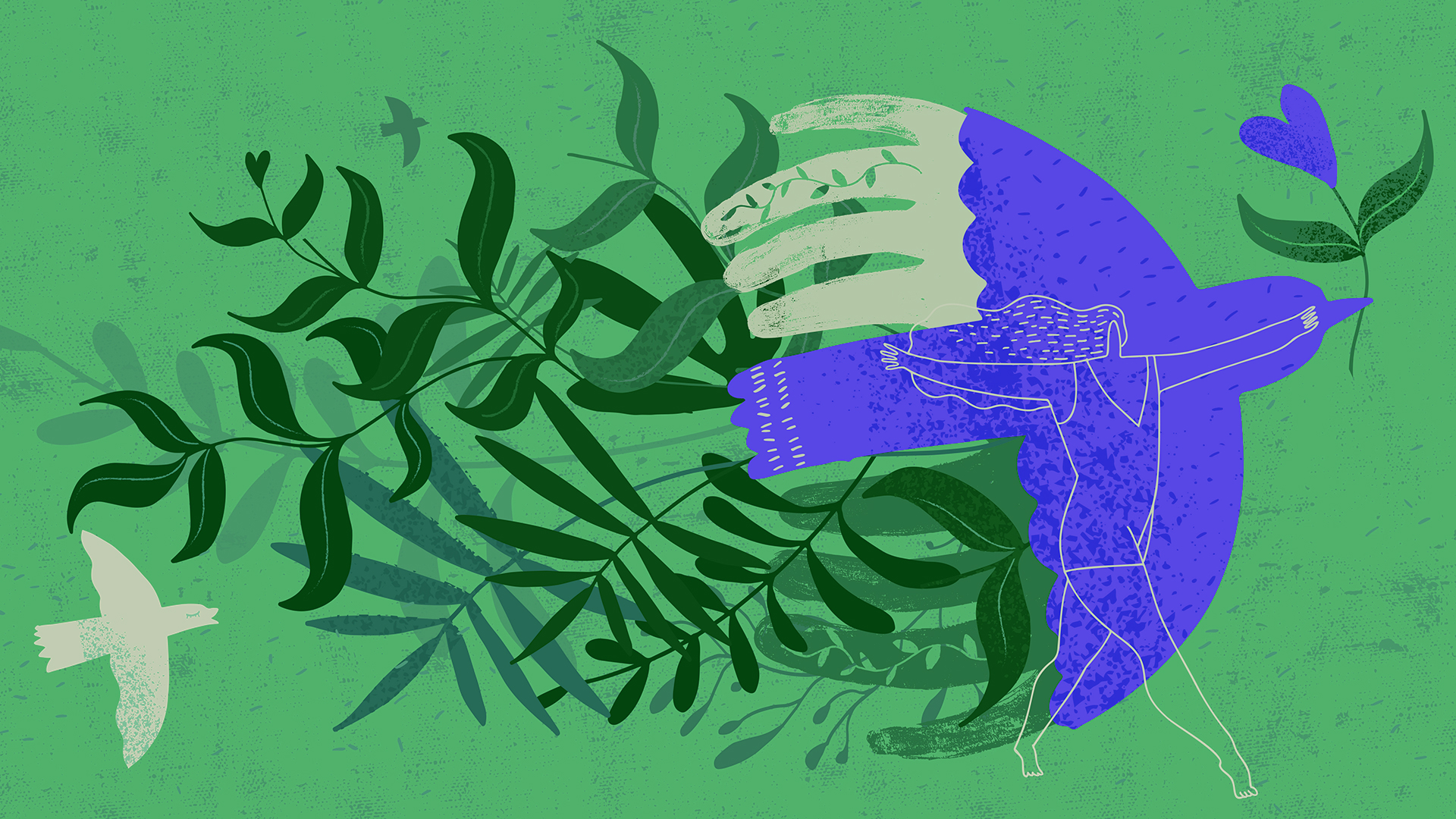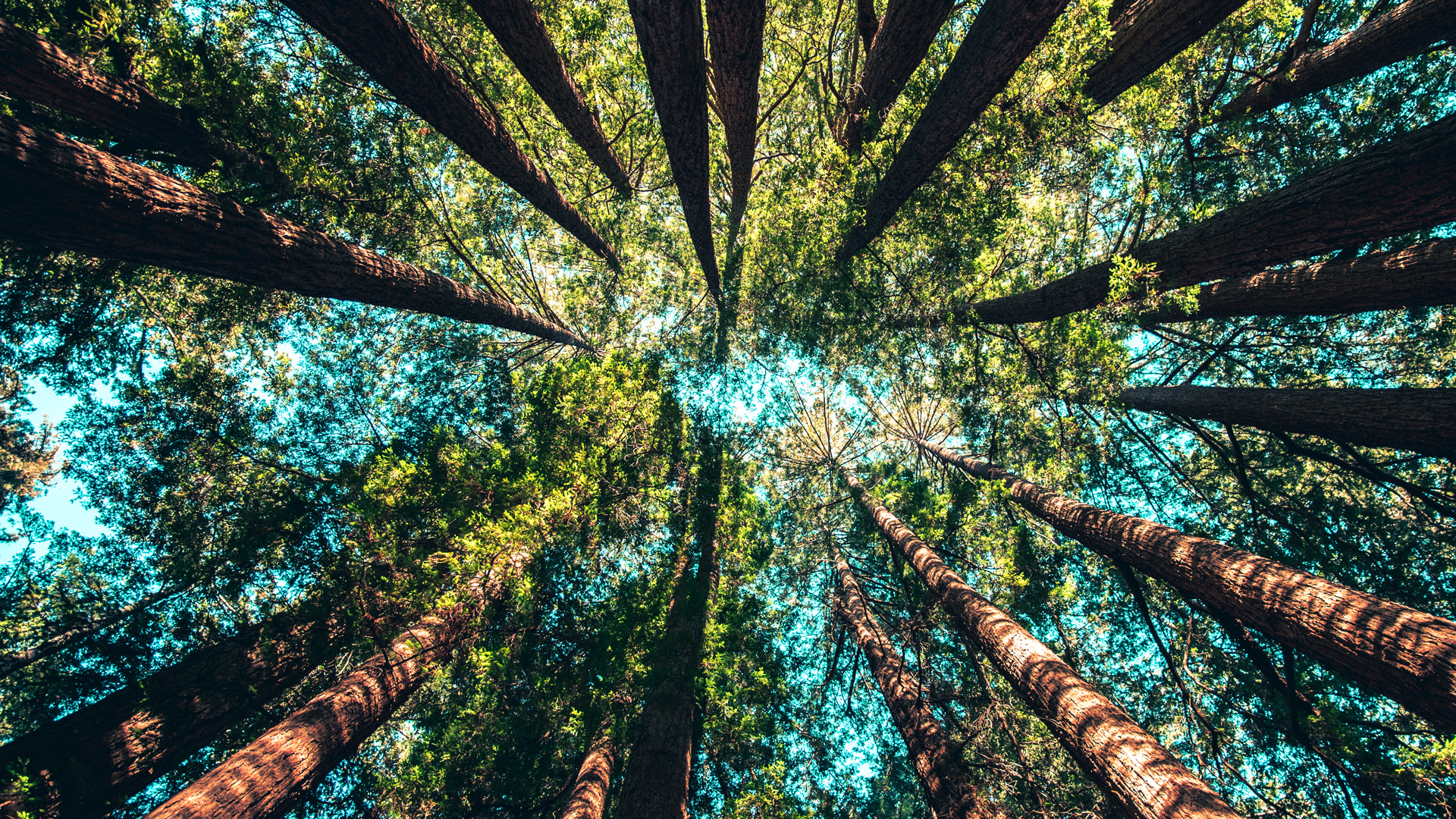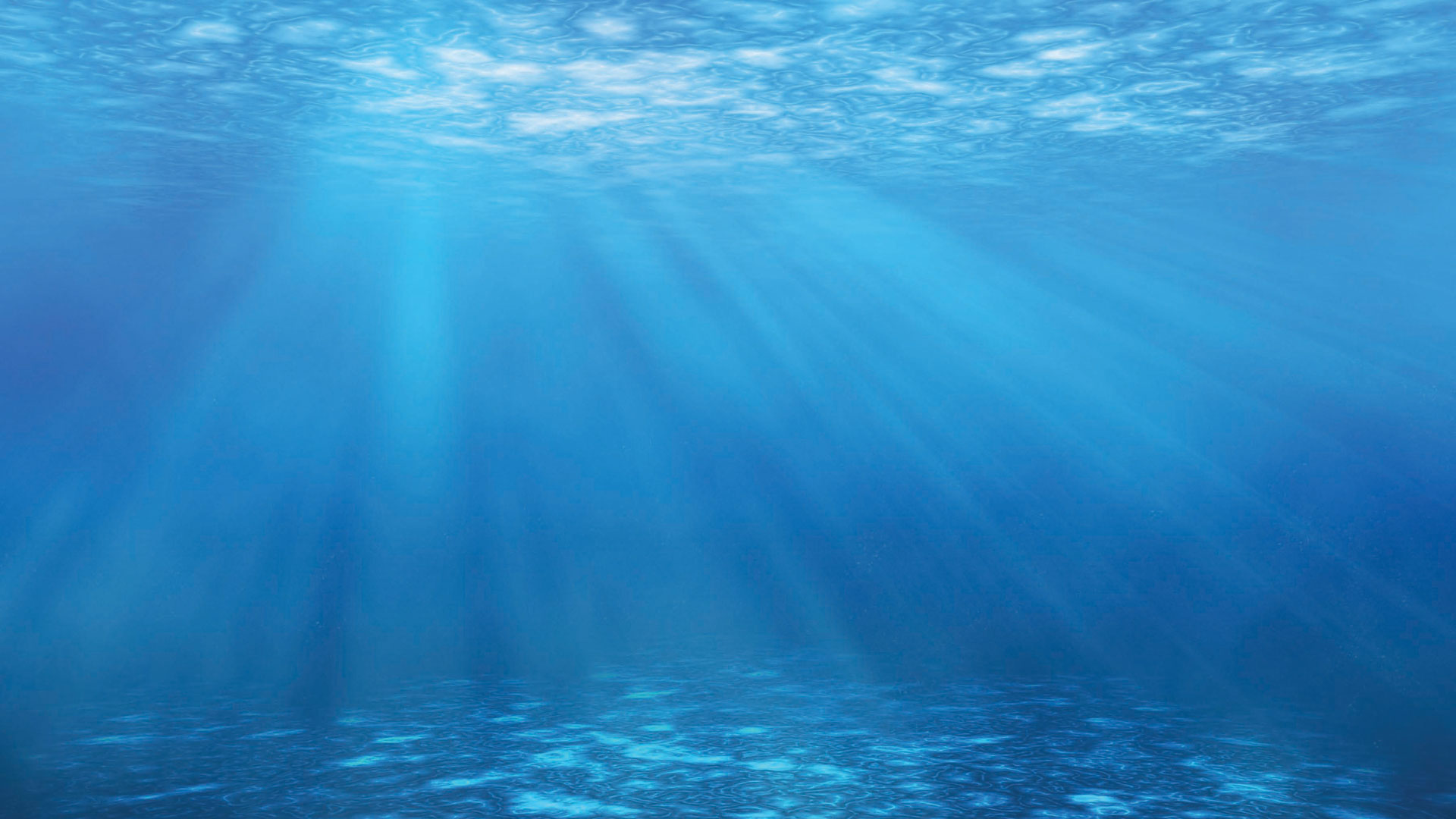Becoming People of Conscience
How to View Fragments of Good News on the Environmental Front
Environmental philosopher Christopher Preston offers an optimistic perspective on our relationship with nature in the face of profound damage and exploitation.
Using the first crude microscopes in the 1600s, Anton van Leeuwenhoek discovered what he termed “wee beasties” in a drop of pond water. These tiny, simple creatures—amoeba, paramecium, volvox, euglena and myriad others—are common characters today in a secondary schooler’s biology textbooks. One assumes they’re always there in streams, lakes and even stagnant waters. But being virtually invisible to the naked eye, who really knows?
As the world changes under our influence, however, even the large creatures, or megafauna—bear, whale, bison and others—are becoming invisible. In their case, however, it’s because we aren’t focusing enough attention on them even though their populations are under increasing pressure.
The consequences, as well as stories of some amazing recoveries, are key areas of Christopher Preston’s newest book, Tenacious Beasts.
“My research is moved by the Anthropocene, the epoch in which human influence on the planet is everywhere,” says Preston, professor of environmental philosophy at the University of Montana–Missoula. “I have a passion for wildlife and I study emerging Anthropocene technologies for their impact on the human-nature experience.”
He writes, “Let me be absolutely clear from the start because I want no possibility of misunderstanding. This book is not designed to provide soothing reassurances about wildlife. Animal populations are not out of danger. Their outlook remains dire.” Still, he continues, “there are reasons to examine the fragments of good news.”
“I think it is important to make clear that the book is solidly about recovery rather than loss,” Preston told Vision. “This is a book about optimism, not tragedy.”
Tenacious Beasts, he writes, “provides hope in the form of some stunning wildlife recoveries. I also offer some answers about how to think differently about animals if these recoveries are going to spread. My work is now focused on restoration and rewilding, which I see as an antidote to the claustrophobia of a synthetic age.”
He noted that “Tenacious Beasts is a counterpoint to The Synthetic Age [2018], because it showcases a world full of liveliness and surprise, rather than a world that is engineered from bottom to top to do our bidding.”
The Synthetic Age won a silver medal in the Ecology and Environment category of the 2018 Nautilus Awards. Preston himself was awarded the 2022 Andrew Light Award for Public Philosophy by the International Society for Environmental Ethics (ISEE). The award recognizes philosophers working in environmental ethics who bring unique insights or methods to broaden the reach, interaction and engagement of philosophy with the wider public.
Vision contributor Dan Cloer recently spoke with Preston about his writing and philosophy.
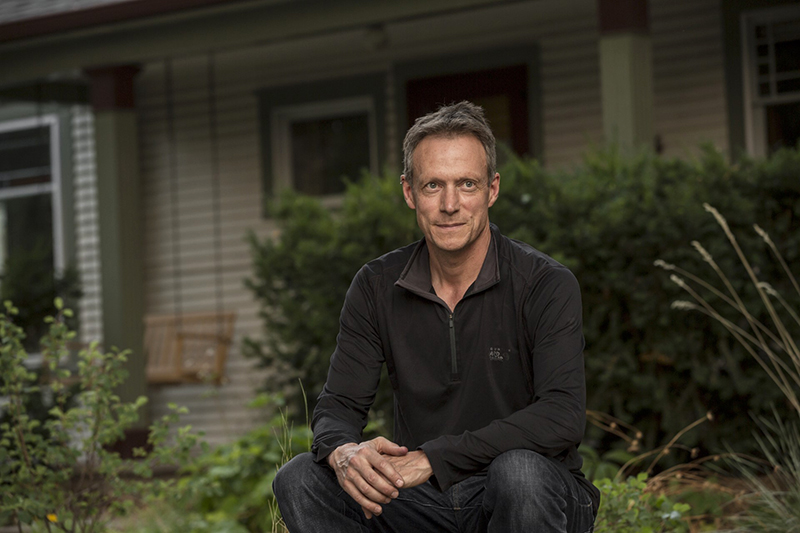
Christopher Preston is a professor of environmental philosophy at the University of Montana. He has authored several books, including The Synthetic Age (2018) and Tenacious Beasts (2023).
DC When you came from England to the United States, were you seeking a kind of rewilding personal experience?
CP I graduated from university in Durham in 1990 and was trying to avoid going to London and putting on a suit. I had worked at a summer camp in the US three years previously. Then I’d driven from Pennsylvania to Seattle, down to California, and then back across the center of the country to Washington, DC. The scale of the landscapes really opened my eyes. I had a sense that there were big landscapes, big animals. I just wanted a little taste of it.
I remember we camped in Yellowstone. There were three Brits, and we all ended up getting in the car in the middle of the night because people panicked and started talking about getting eaten by bears.
Then I was in grad school in Colorado. And I went to Alaska and just got intoxicated by the animals. When I’d go back to England, I’d see a rabbit and a fox and it wouldn’t cut it for me. It felt like you had to be in a bigger landscape to see actual wildlife. Of course, that’s a bit of a prejudice, and I’m not super proud of how my mind was working then.
DC Prejudice in what way?
CP Well, part of the prejudice was this idea that you come to the western United States, and there are these big, untouched landscapes full of charismatic animals. I totally bought into it. But that’s only partially true, because the landscapes have been inhabited for millennia, and they’re not pristine, untouched places. I’ve learned that that was a little bit naive and racially insensitive. Even though the animals are real, I didn’t quite have the right picture concerning the human element when I first arrived over here.
DC It seems that you’ve made a career out of that realization. Would you explain the role of an environmental philosopher?
CP We try to come up with helpful ideas about the environment and about the proper relationship between humans and the environment, and we look for problematic ideas that are in circulation about that environment—like when I came here and thought, “No one has ever lived in Yellowstone; Yellowstone is the wildest of the wild.” That sort of misunderstanding is an example of what I mean by a problematic idea.
An environmental philosopher is someone who tries to identify problematic ideas and helpful ideas. And the environment can include a very wide view—the gamut, from the office I’m sitting in right now, as well as across the campus to a hillside, and on past that to a bigger mountain, and so forth.
“In Tenacious Beasts I’m trying to update our ideas and suggest something that’s better than the attitude and the ideas that have dominated our relationship with those animals, which has pushed them rapidly toward extinction.”
DC The problematic ideas in this case are the old ways of seeing populations as resources to be extracted through hunting and trapping, and of removing the competition (such as predators)?
CP Here’s an example. The “big, bad wolf” was one idea that had wide circulation. Though it’s true that wolves did and still will kill livestock, the character of the wolf is not really big and bad at all. We know that now, because we actually know more about their social structure and how they live. Animals like wolves, sharks, bears—we tend to have an exaggerated sense of the danger they pose to us. You’re actually far more likely to get killed by a dog than you are to get eaten by a bear.
Another part of the problem is that we associate these animals with certain geographies. We imagine that a wolf or a bear or a mountain lion ideally lives in its own space where humans don’t live. The Wilderness Act is the perfect setup for the idea of segregated spaces, because it says the wilderness is a place where humans visit but don’t remain. So the wilderness is the place for the wild beasts—“wilderness” is literally wilde-dēor, “place of the wild beast.”
The problem with how we think about wolves, for example, is not just that we exaggerate how dangerous they are. It’s that we imagine the wolf can only live in Yellowstone or Glacier or someplace like that. If you look at what’s happening in Europe—and that’s why I start Tenacious Beasts with the wolf in Europe—you find that the wolf is living right under people’s noses. It isn’t an animal of big, open, wild spaces. It’s actually an opportunist that will quite happily live in a rural area, pretty close to people. There are wolves denning not far from the end of the runway at the Rome airport.
DC This is a very interesting story of recovery and cohabitation, but it’s not going to solve the larger biodiversity crisis. How do these positive stories help in relation to this greater problem? Is one of the goals of Tenacious Beasts to help people see what we’re missing?
CP When I give book talks, I’m very careful to say, “This does not solve the biodiversity crisis.” I certainly don’t want to be labeled as a biodiversity-crisis denier, yet it happens. On my blog I wrote about a wolverine that showed up in South Dakota, really out of place. These are creatures of the high mountain and the snow, and here it was, a couple hundred miles across the plains. And I said, “Maybe wolverines are more adaptable than we thought they were.”
One scientist responded, “The wolverines are not so adaptable that they can live on the plains. You really have no idea what you’re talking about.”
So I’m a little worried about scientists saying, “Is this guy denying the biodiversity crisis? Why is he giving us this good news when the news is predominantly bad?”
I’m not saying we don’t have a biodiversity problem. We still do. But if you can say something positive in what is otherwise a negative story, it has the potential to shift something for people in a way that doesn’t tend to happen otherwise. There’s this environmental despair and no sense of what might go right.
For example, a moderator for a recent interview did not seem very tuned in to environmental issues, except to say that the situation is really bleak. But the next day they sent me a news story about the recovery of northern elephant seals on the Pacific coast, showing that after hunting was outlawed, they rebounded from less than 100 animals in the 1930s to 175,000 today.
“I do think shining the light on some good news can turn some people around and maybe help them approach the problem differently.”
DC As you conclude Tenacious Beasts, you write, “They [in this case salmon, though I imagine “they” could equally refer to other animals you highlight in the book—whales, beavers, wolves, bison] exist timelessly alongside us, stitching together a world in which people of conscience desire to live.” What do you mean by “people of conscience”?
CP I’m reaching for the argument that these wild species have intrinsic value, and if we are morally sensitive to that, we want to live in a world full of these wild species. Salmon for millennia have brought things together for people. In terms of seasonal cycles and forest nutrients, and family and unity, they have stitched together a lovely world for humans, and also a world where many species that have intrinsic value get to live. Those salmon are food sources for so much in the forest; 135 species depend on salmon’s return. The spruce trees depend on the nutrients of the salmon to grow to that giant size.
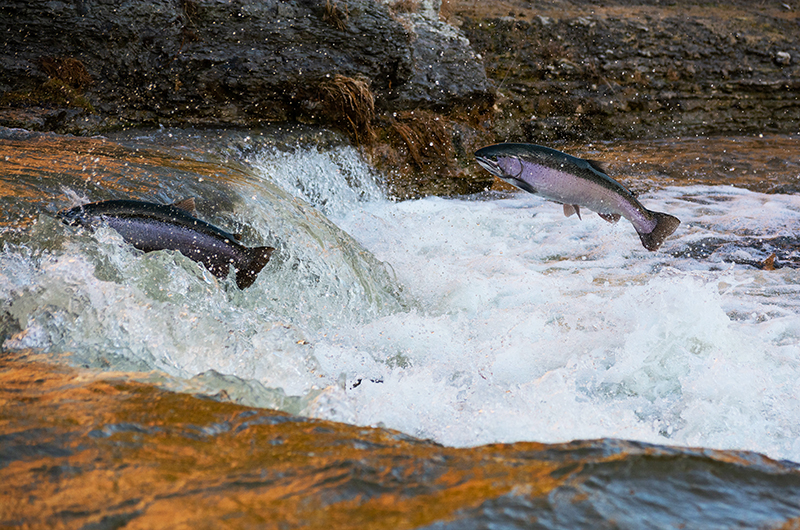
Salmon recoveries also create cultural restoration. For example, I discuss tribes on the Elwha River and on the Eklutna River up in Alaska. It’s also clear that bison do that for a lot of the Plains tribes. Cultural restoration is going on alongside the ecosystem becoming whole again. Those salmon stitch together the world for people, for other animals and for other systems. My claim is that that’s the world in which people of conscience want to live; they’re not just focused on themselves but on the larger connections.
DC At the warehouse food stores you can find huge coolers filled with salmon fillets. How do we approach the consumer who sees this great abundance but doesn’t understand the critical issues buried in this trough of salmon? How do we become people of conscience?
CP One interesting thing about that cooler is that those salmon are pink because they have artificial color put inside them. Farmed salmon is kind of grey; with artificial color it looks like a nice, pink salmon. That would be an interesting thing to have on a big label on top of that cooler. I wouldn’t stop people from buying it, but it’d be nice to show what’s in there. “Country of origin” labeling is another missed opportunity for people to learn something about what they’re putting in their mouth. Not everyone’s going to care that something comes from Brazil or New Zealand. But I think it would be interesting if these snippets of information were out there.
A philosopher said to me once, “None of us ever say anything new; we just say the same thing over and over again in different ways until someone listens.” And I’ve always thought that’s good advice if you do this kind of work. I don’t think of it as a lost cause. I think of it as an eternal struggle to present information in interesting ways and to gradually have people align their actions with their values.
DC There’s also the instrumental-value argument for rewilding.
CP I would say I’m an intrinsic-value theorist. I prefer the intrinsic-value argument, but I’m not averse to deploying an instrumental-value one when it would be helpful. In the book I do that with whales and sea otters when I write about their climate benefits (with sequestering carbon). The reason we should keep them here is that they belong on the landscape [intrinsic value].
But I do think you have to be pragmatic about which argument you employ. Politically, I think it helps if you can show that there’s an advantage to humans [instrumental value]. Think about what makes it through Congress and what doesn’t—very few intrinsic-value types of legislation make it through Congress. There are some exceptions, but it’s rare.
DC You highlight what I would call “natural technology” in the book, in terms of, say, beaver-dam-making and river-engineering and nutrient movement through salmon and whales—overlooked ecological relationships that are a mash-up of intrinsic and instrumental value. It seems there’s a parallel here between The Synthetic Age and our ability to change the world. These organisms also change the world just in how they live.
CP I recoil a bit from the idea of a beaver dam or a termite mound as “technology,” but others have used the idea. I don’t like to label the work of natural organisms as technology; I think of Synthetic Age as technology and Tenacious Beasts as biology. I think of that as being more spontaneous, less design, more unpredictable. In The Synthetic Age, what stops the world from being totally engineered and curated is biological forces, evolutionary forces; when you’re trying to edit a genome to introduce a certain trait, you make your edit in one part of the genome, but unfortunately you get these off-target effects, where something else happens elsewhere. This is biology pushing back; and when the grizzly bear eats the person in Yellowstone (how I ended The Synthetic Age), that’s biology pushing back. Tenacious Beasts is saying, “Let’s look at the ways in which the world is actually not becoming Disneyland. It’s still in the hands of these tenacious beasts that do surprising things.”
That’s why I wouldn’t, myself, use the word technology for what these species do.
DC Clearly though, with our technology we are the big impactors. So I was confused at the end of the book, where you write of our population heading toward 9.8 billion, and in the meantime nature is just waiting to get loose and spring back, like a slowly climbing rollercoaster clickity-clacketing to the peak against the gravitational pressure of human wants and planetary exploitation. I know that’s supposed to be a positive point, but I looked at it and said, “I don’t know if that coaster is going to stay on the rails.”
CP I understand the hesitancy there. Other people react to that, too, and say, “What do you mean? There’s no way that’s good news.” But it is a provocation. It’s like, “Let’s see how this sits with you, dear reader.”
“One of the things that’s clear in the book is that if you give some species space and stop killing them, they come back; sometimes you don’t have to do much except back off a bit. That’s a key message.”
It looks like our population will peak in the next 30–40 years. After that there will be less impact on the earth as population lessens. We’re slowly—too slowly, but slowly—getting better at how we view resources. We’re beginning to figure out that burning fossil fuels and putting all of those particulates and gases into the atmosphere is just not very good for us or the planet. With fewer people and better resource management, the rollercoaster could crest and start to shoot downhill.
There are contingencies, of course. One is whether human population will really start to go down within the next 40 years or so. And human behavior will still matter well into the future. Will people continue to eat more meat and drive more cars and use more air conditioning? Climate will factor in as well.
Now, it’s legitimate to ask what will be left at that point. But what I’m saying is not totally fantastical. Europe talks about a depopulation problem; it’s estimated that most of Europe will have fewer people by 2050. And that’s why the rewilding movement in Europe is really taking off right now—open spaces are already available. Wolf, bear and lynx populations are all growing in Europe. There are case studies that show it, and I’m reporting some of those cases in Tenacious Beasts.
Yes, there are problems that might make this scenario not actually come to pass the way I present it. But I think it’s valuable to present what I have as a possibility. It fits with the theme of the book: Great things are possible if we play it right.

